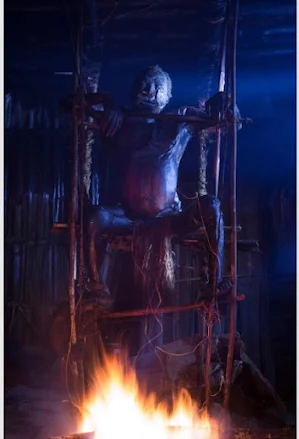The mummies.
Mummies; Egypt, pyramids, dead bodies, old bandages, coffin boxes, tombs, pharaohs, these are the words you might be thinking of when you see the word mummies. Because this is how it is shown in movies, right.
Well, what if I told you that there are also different kinds of mummies. Your reaction would be, 'really!'. And, what if I told you they are not to be found in Egypt only. You would think, am I lying, right.
But, Yes that is true. There are other mummies and in Papua New Guinea there are mummies too. Real mummies.
In Aseki, a district in Papua New Guinea mummification is part of their burial rituals for generations. The way they mummify their dead is different from the Egyptians. The Ancient Egyptians removed the dead's organs, and let the inside dry. They keep the organs inside a jar and leave the body for up to 40 days before it is filled with sand and wrapped with bandages.
The mummies of Aseki are different and interesting. Read on to know why?
Photo by Tia Ghose,2015.
The mummies of Aseki
Photo by Ronald and Andrew,2015.
The Mummies of Aseki.
Where is Aseki?, and why do they practice the art of mummifying their death?
Interesting, right.
Aseki is a district in Papua New Guinea, a fringe highlands region that is somehow a little detached from the ideas of the modern world. Sometimes usual things like mists may be considered omens from the spirits. Here the idea of the modern world is something misunderstood by the ancient world. Kind of bizarre, right.
Well, wait until you hear about their mummies.
How did they select the mummies?
In today's modern context. The influences of Christianity and globalization have changed a lot of tribal cultures. However, the likely person to be mummified is the tribal elder.
In the past, mummification is done on every member of the tribe. That includes women and children.
Photo by Ronald and Andrew,2015.
The mummification process.
Today, mummification is a little different. It is not the same as what their forefathers practiced. Due to globalization, young people are becoming less interested in mummification rituals and more focused on business, work, schools, and modern life.
However, despite the modern ways of today. Most elders dying wish is to be mummified. The process takes time and a lot of planning so elders who want to be mummified after he /she departed have to inform the son of their dying wish. The process is long and during the process, people have to remain with the dead body.
PHOTOGRAPH BY ULLA LOHMANN
Mummification of a tribal elder.How are the mummies made?
The process takes time and careful handiwork of the mummy makers to make the mummies more lively.
Before the mummification ritual process begins some initial preparation has to take place. A smoking house has to be built and the body has to be positioned on a smoking chair. The smoking chair allows the body to be placed over the fire for the smoking and mummification process to take place.
The body of the tribal elder who has departed is taken to the smoking house by his sons and other young male tribal members. The smoking house is where the actual mummification ritual takes place. The body is suspended over a fire and smoked. The mummy is made by smoking the body. Mummy makers stay with the body and continue the rituals for days.
But you might want to know how they deal with body fluids and organs.
The bloated body's fluid is drained through billing holes using sharp bamboo sticks to remove the body fluid. To remove the organs the anus is expanded using bamboo sticks and the organs are removed. Once the body is smoked, the body is then covered with ochre clay. The clay is also part of the rituals but it also serves as a medium to wick additional moisture from the body(Ronald and Andres,2015).
The important part of mummification is to keep the face intact. The local tribe believes that this will allow the spirit to find its body at night time to rest. Because during the day the spirit leaves the body and goes outside.
The entire process takes up to a month. Once it is done, the mummy is placed on the side of the rock with its smoked chair. This will be its resting place.
PHOTOGRAPH BY ULLA LOHMANN
PHOTOGRAPH BY ULLA LOHMANN
The cultural significance of mummies.
The mummies are a way for the living to connect with their departed loved ones and ensure that the departed are not forgotten. It also symbolized good luck and protection from bad omens.
It is a very unique culture that is still practiced today.
Reference.
Daniel Stone, National Geography, October 5,2016.
Link. https://www.livescience.com/50948-photos-smoked-mummies-papua-new-guinea.html.














No comments:
Post a Comment